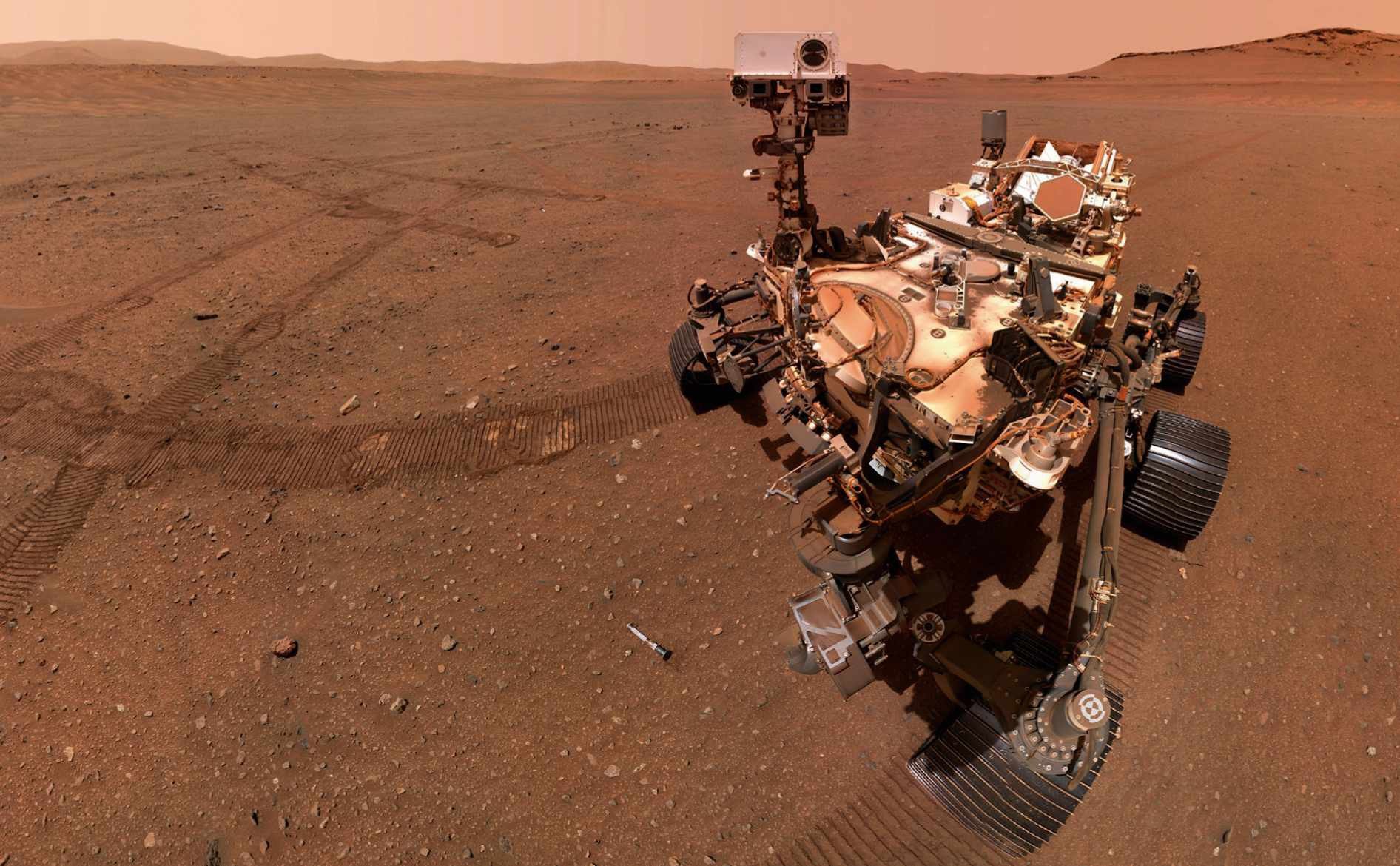Sample tubes have been gathered on the surface for future collection

NASA’s Perseverance rover has created its first depot of Martian soil samples, dropping its final tube on 29 January at a region known as Three Forks. A future joint NASA and ESA mission will aim to retrieve samples directly from Perseverance, but this depot will act as a back-up just in case the rover became inaccessible.
For the last three years, Perseverance has taken samples in pairs from across the surface – one to leave at the depot, one to keep on board. It has now collected nine rock and soil samples, as well as a ‘witness tube’ filled with Martian air that will help determine if the other tubes have been contaminated during their journey back to Earth.
Perseverance is exploring Jezero Crater, which was formed four billion years ago when conditions on Mars were temperate enough for liquid water to flow across the surface. The rover is traversing what was once a delta, where a river flowed out into a lake. This area offers a wide range of terrains, each shaped by different geological processes, that will give scientists insights into how water shaped the Martian surface. They may also contain signs of ancient microbial life.
The mission has already explored the lower parts of the delta, but has now transitioned to the top, a point marked by the ‘Rocky Top’ outcrop.
“We found that from the base of the delta up to the level where Rocky Top is located, the rocks appear to have been deposited in a lake environment,” says Ken Farley, Perseverance’s project scientist at Caltech. “Those just above Rocky Top appear to have been created in or at the end of a Martian river flowing into the lake.
“As we ascend the delta into a river setting, we expect to move into rocks that are composed of larger grains – from sand to large boulders. Those materials likely originated in rocks outside of Jezero, eroded and then washed into the crater.” mars.nasa.gov/mars2020
Comment by Chris Lintott

The importance of getting fresh Martian material into a terrestrial laboratory can’t be overstated. Though the instruments carried by rovers like Perseverance are wonders of miniaturisation, they can’t possibly compete with the equipment sitting in any university lab.
Scientists around the world are already preparing their cases to be among the lucky few to get their hands on what’s returned from Jezero Crater. Yet, just as we’re still studying material brought back from the Moon by Apollo astronauts, NASA will set some precious Martian dust aside for study with technologies not yet developed. The researchers of a century hence may consider the contents of those tiny tubes even more special than we do.